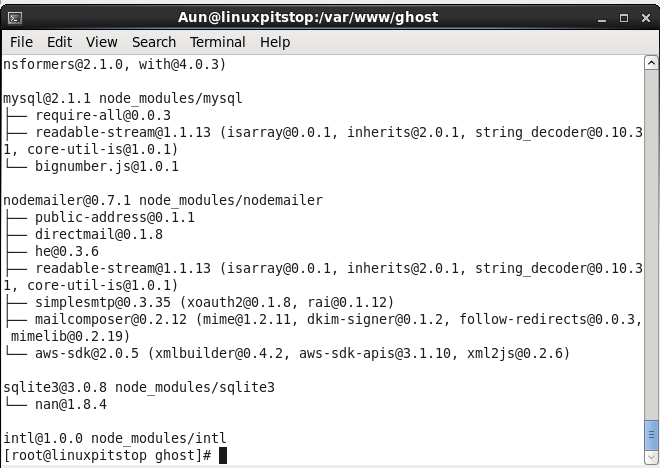Ghost is an alternative to Wordpress; it is a simple and powerful blogging platform being used by a large number of webmasters to publish their internet content. It is a free, open source project and is written in Java. The development of this project was started in 2012 and it has been receiving consistent bug fixes and features. It has evolved into a well structured, mature application which you can trust to build your blog and dynamic websites. Let’s see how we can install it on popular Linux distributions like CentOS and Ubuntu.
Installing Ghost 0.7.0 on Centos 6/7 and Ubuntu 15.04
In order to install Ghost, we should take care of dependencies first. Here are the packages that should already be installed on our Linux system before we attempt to install or run Ghost.
- Curl
- Wget
- Node.js
- NPM
Installing Dependencies
In order to install Curl and wget on CentOS, run following command:
In order to install Curl and wget on Ubuntu, run following command:
In order to install Node.js and NPM on CenOS, run following two commands:
In order to install Node.js and NPM on Ubuntu, run following two commands:
Alright, our Linux system is all set to install Ghost now.
Installing Ghost
The following process for the installation of latest version of Ghost is same for both CentOS and Ubuntu.
First of all create a directory for your new Ghost installation.
Change your working directory to this newly created one and here download the latest version for Ghost.
Once the download process is complete, extract the downloaded file.
Rename the extracted directory to something more meaningful.
Go into the “ghost” directory and install it by using the following command:
This is how the successful installation process should look like.
Once the installation process is complete, start Ghost by running the following command:
Congratulations, Ghost is up and running now. Point your browser to http://locahost:2368 or http://yourIP:2368 (replace “yourIP” with your actual IP address) to access your Ghost based blog.
Conclusion
Ghost provides a simple editor, lightweight interface and a pleasing look & feel. The development team of this project is working actively to equip it with all necessary and modern features. Hopefully, we should be seeing Ghost as a more mature and popular application in near future.








